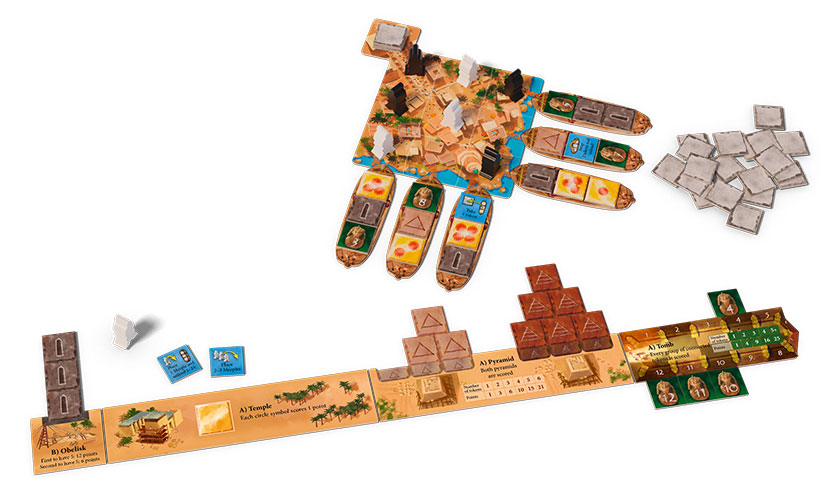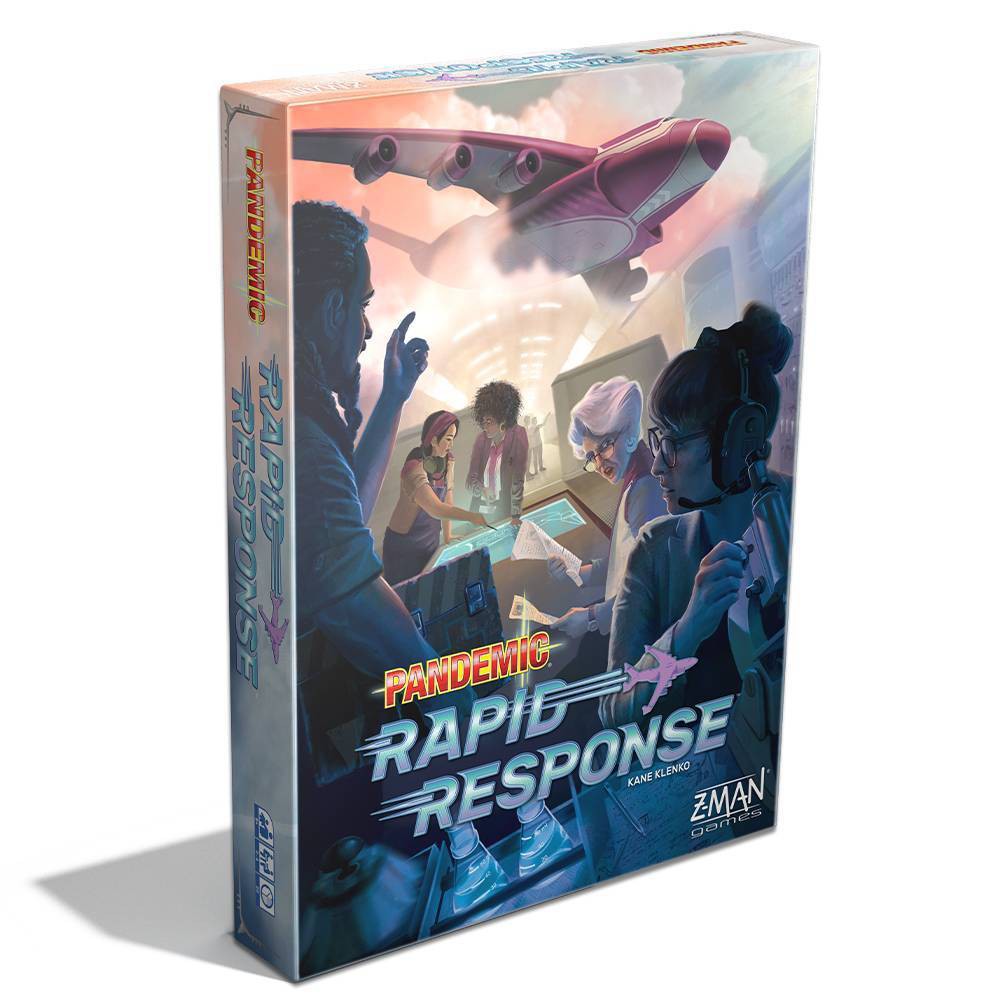Air, Land, and Sea is a great, simple, quick-to-learn, and highly portable two-player game that manages to bring something new despite the fact that the game is really just a deck of 18 cards. It’s very clever and reveals quite a bit more strategy with increased plays, yet it’s elegant and simple enough that almost anyone could play it.
Each player in Air, Land, & Sea will get a hand of six cards to start the game, and unless they get a card that allows them to draw another, that’s all they get. The cards have the values 1 through 6, one set for the Air, one for the Land, and one for the Sea. Players play one card at a time and may play them face up, using the value and text on the card’s face, to the theater matching the color on the card; or face down, getting a flat value of 2 and no benefit from the text, to any theater. They play each card to one of the three theaters of battle, the three names in the title of the game, and the sum of the values on their cards will be compared at end-game to the cards on their opponent’s side, taking into account any adjustments from face-up cards elsewhere on the table. If you play to a theater that already has one of your cards, the new card covers most of it, which matters for certain card abilities. If one player wins two of the three theaters, they win the game; the start player wins any ties. The winning player gets some number of points, up to 6, and the players play further games until one of them has 12 points.
There are two major twists, of course. One is that the cards with values from 1 to 5 have extra abilities that can range from invalidating an opponent’s card to allowing you to flip any uncovered card on the table (face-up or face-down) to changing the values of other cards in the same or adjacent theaters. Thus, the timing of when you play your cards is a huge part of strategy in Air, Land, & Sea, both in terms of lining up your own cards so that you can maximize the benefits of those card texts, and in hoping your opponent will play cards you can counteract with cards still in your hand.

The other twist is that you can concede the game before it ends and deny your opponent the full 6 points they’d get if you played until both players had exhausted their hands. The number of points you receive for winning depends on how many cards are unplayed and whether you were the first or second player (which alternates in each game). It’s often clear early on that you can’t win at least one theater, because you didn’t get the right cards in your hand or because your opponent has stronger cards, and I’ve had several games where I had two cards left in my hand and realized they weren’t enough to win two of the three theaters for me, so concession was the right strategy. It lets you stop a game early so you live to fight another day.
The game does have a few quirks that might send you back to the rulebook or just require a few plays to get accustomed to them. One is that some cards, like Maneuver, require you to take the action in the text, rather than giving you the option. Another is that cards can be moved to another theater when covered, but never flipped. And there is a distinction between playing a card, which may trigger other card abilities, and moving one, which generally does not. Once you get the hang of those, though, the game flies by – no pun intended – rather quickly, and you can easily play an entire match in 20 minutes. And despite the short ruleset and small deck, there’s a lot of replay value because of the sheer number of possible combinations (my quick calculations show over 18,000 possible sets of 12 cards from 18, without considering the two different hands of 6, but I suck at combinatorics). I missed Air, Land, and Sea when it first came out – it was self-published in 2018, then picked up by Arcane Wonders and published in early 2019 – but at $15 on amazon it’s an easy addition to my best two-player games list.






